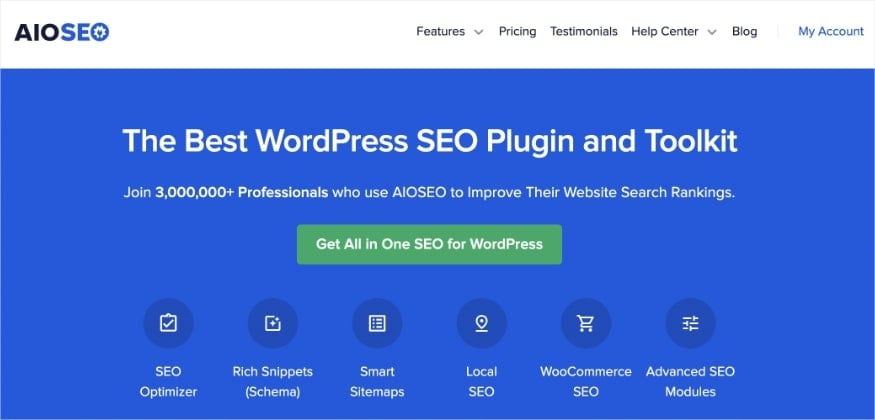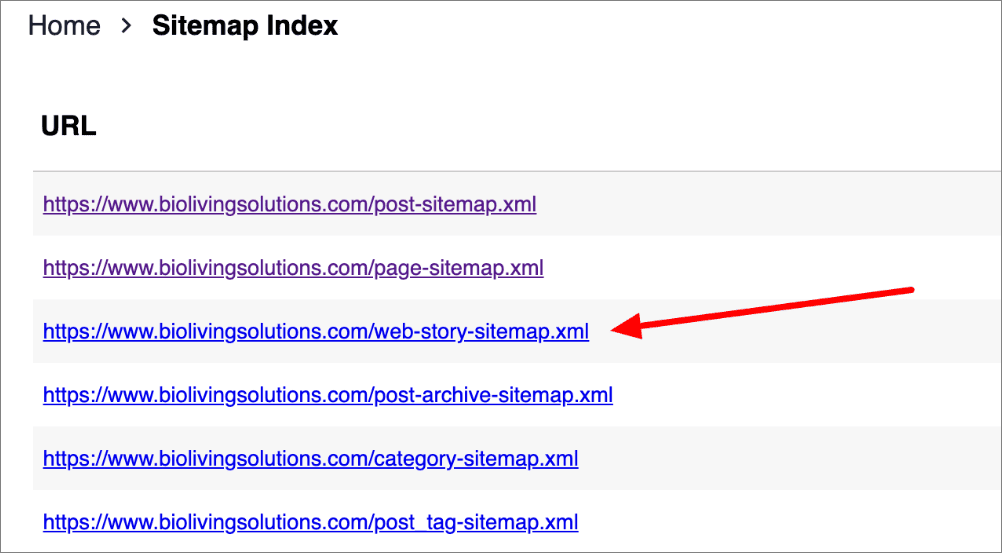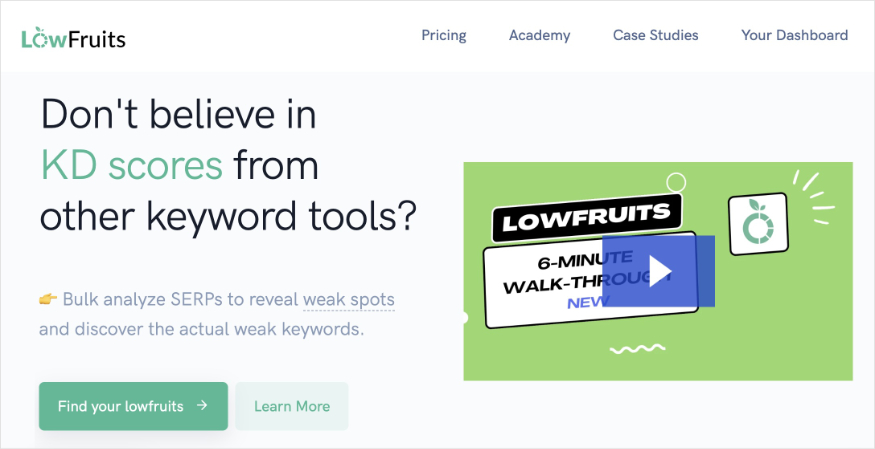Wondering what Google Web Stories are and how they can benefit your SEO?
While Google isn’t exactly a social media platform, its Google Web Stories feature mirrors the stories format found on platforms like Facebook and Instagram. This is a highly engaging format that can be used by SEOs and marketers to drive traffic to their sites.
In this article, I’ll explain what Google Web Stories are and how you can leverage them to grow your site.
Ready?
Let’s dive right in.
What are Google Web Stories?
Google Web Stories are a visually rich, mobile-first content format designed to deliver bite-sized information in a highly interactive way. These stories are built to be consumed quickly, with users swiping through full-screen images, videos, and animations, similar to the Stories format on social media platforms like Instagram or Snapchat.
Unlike traditional blog posts or articles, which require users to read paragraphs of text, Web Stories are short and sweet, offering content in a format that’s more engaging and easier to digest. They combine the best aspects of visual storytelling with the speed and mobile-friendly nature that Google and its users value.
Differences Between Web Stories and Traditional Web Content
At first glance, it might seem like Web Stories are just another way to display content. But there are key differences between Web Stories and your usual blog posts or articles:
Format
Traditional web content is typically composed of long-form text, images, and static elements. Web Stories, on the other hand, are made up of a series of slides that users can swipe through, which are often multimedia-rich, including animations, videos, and interactive features.
Purpose
Web Stories are meant for quick consumption—think of them as snackable content. While blog posts focus on in-depth exploration of topics, Web Stories are designed for fast, visual storytelling.
Engagement
Traditional content requires readers to scroll and absorb detailed information, while Web Stories leverage their visual appeal to grab attention and deliver key messages in a more engaging way.
How Web Stories Improve Mobile User Experience and SEO Rankings
With Google’s emphasis on mobile-first indexing, it’s crucial to create content that’s optimized for mobile devices. Web Stories are the epitome of mobile optimization. Their format ensures that users get a fast, seamless, and engaging experience on their smartphones.
This can translate into better rankings, as Google rewards content that provides a positive mobile experience. If your Web Stories load quickly and keep users engaged, you’re more likely to see a boost in your search rankings.
If you’re looking for a way to beef up your mobile SEO strategy, this is probably it.
For more tips, check out the list of mobile SEO tools I recommend.
How Google Web Stories Work
So, how do Google Web Stories work?
Let’s briefly look at the ins-and-outs of this powerful platform so you better understand the value it brings to your online marketing efforts.
The Technical Framework: AMP and AMP Stories
Google Web Stories are built using Accelerated Mobile Pages (AMP), which is a lightweight framework designed to make web pages load faster, especially on mobile devices. AMP Stories are a specific application of AMP technology, optimized for storytelling.
AMP Stories use an open-source framework, allowing creators to build Web Stories with elements like videos, images, and animations, while keeping load times fast and user-friendly. The combination of AMP’s speed and the dynamic nature of Web Stories makes them an ideal format for mobile-first users.
Platforms and Tools to Create Web Stories
Creating Google Web Stories is easier than you might think. If you use WordPress, the Google Web Stories plugin is a great tool that allows you to create, manage, and display Web Stories directly from your site.
This plugin makes it simple to add images, videos, and text, and it automatically optimizes your stories for mobile devices.
If you prefer to create Web Stories from scratch, there are other tools like MakeStories and Web Stories Builder. These platforms provide user-friendly drag-and-drop functionality, allowing you to customize your Web Stories to your brand’s style.
Once you’ve created your Web Story, Google works its magic by promoting it across its ecosystem. Your Web Stories can appear in Google Search, particularly in the “Top Stories” carousel, and in the Google Discover feed, which is personalized for each user based on their interests.
This increased visibility is a major reason SEO professionals should be paying attention to Web Stories. By making your stories discoverable on these platforms, you can drive more traffic to your website and increase engagement with your content.
Which brings us to the next point…
Why Should SEO Professionals Care About Web Stories?

Enhanced User Engagement
As an SEO, you know that engagement is key to success. Web Stories are highly interactive and visually appealing, which leads to increased user interaction. With more users engaging with your content, you’ll see improved metrics such as time on site and page views.
The more engaging your content, the better your chances of ranking higher in search results. And Web Stories are a powerful tool for boosting user engagement and, consequently, your website’s performance.
Increased Online Visibility
Web Stories are designed to appear prominently in Google Search results and the Discover feed, offering a prime opportunity for increased visibility. Since these stories are featured in an attention-grabbing carousel format, they give you the chance to appear at the top of the search results in a way that traditional content cannot.
Higher Click-through Rates (CTR)
Because of their visual and interactive nature, Web Stories tend to have higher click-through rates compared to standard blog posts or articles. The eye-catching design and engaging multimedia make users more likely to interact with your content, which means more clicks, more visits, and more potential conversions.
SEO Best Practices for Google Web Stories
Now that you know what Web Stories are, let me show you some best practices to implement when creating them.
Use the Right SEO Tool
One of the first steps to creating Web Stories that are SEO-friendly is to ensure you use the right SEO tool. For WordPress users, it doesn’t get any better than All In One SEO (AIOSEO).

AIOSEO is a powerful WordPress SEO plugin boasting 3+ million active users. Many brands and bloggers trust the plugin to help them boost their search engine rankings and traffic. That’s because the plugin has many powerful features and modules to help you properly configure your SEO settings.
Regarding Google Web Stories, I love this plugin because it has a Web Stories integration. This means you can easily take care of your Web Story’s SEO without a fuss.
For example, you can optimize SEO titles, meta descriptions, and the robots meta for your Web Stories. Just head to the AIOSEO menu » Search Appearance » Content Types to configure these settings.

With the AIOSEO/Web Stories integration, you can also automatically output AMP Story Schema for Web Stories. This helps ensure your content is fully optimized for Google Search and Discover. Plus, AIOSEO also includes your Web Stories in your sitemap.

This makes it easier for search engines to index your content, resulting in better search rankings and more traffic to your site.
Finally, AIOSEO also enables you to easily manage your Web Stories archive pages.

Doing so helps:
- Improve navigation: Make it easier for users to find relevant content.
- Boost SEO: Optimized meta descriptions and URLs for better search engine visibility.
- Content organization: Structure your content effectively to enhance user experience.
These and more, are enough reasons to use AIOSEO for your Web Story optimization.
For step-by-step instructions on how to install AIOSEO, check our detailed installation guide.
Incorporate Keywords and Relevant Content
To make your Web Stories discoverable, conduct proper keyword research. A great tool for this is LowFruits.

LowFruits is a revolutionary keyword research tool designed to help you unearth low-competition keywords to skyrocket your SEO.
Incorporate targeted keywords and related content that aligns with your audience’s interests. This ensures that your stories rank well for the search queries that matter most to your business.
Optimize Images and Media
Fast load times are critical for Web Stories. Compress your images and media to ensure that your stories load quickly without sacrificing quality. Use a tool like TinyPNG to compress your images without losing resolution.
Check out our list of image optimization plugins for more options.
Ensure Accessibility
Make sure to include alt text for all images and captions for videos to ensure that your Web Stories are accessible to everyone, including users with disabilities. This also improves your SEO by making your content more discoverable by search engines.
Make Sure Your Story is Indexed
For your Web Story to be discoverable, you must ensure that it’s indexed. This is easy to do if you use a WordPress SEO plugin like AIOSEO. To check the indexing status of your Web Story, simply go to Stories » All Stories and hover your cursor over the Index Status icon.

One way of improving the crawling and indexing of your Web Story is to link to it from your other content.
For more information, check out our tutorial on checking your indexing status in WordPress.
Common Mistakes to Avoid with Google Web Stories
Creating Google Web Stories might seem straightforward, but there are a few common pitfalls that can undermine your efforts. Let’s explore these mistakes and how to avoid them.
1. Overloading Stories with Too Much Content
Here’s the thing about Web Stories: less is more.
Each slide should communicate one key idea or message. Trying to cram multiple points into a single slide can overwhelm users, making them swipe away before they engage. Remember, Web Stories are all about bite-sized, easily digestible content.
Tip: Break down your story into simple, engaging chunks. For example, instead of listing five benefits of a product on one slide, dedicate a slide to each benefit. This keeps the story clean and compelling while encouraging users to keep swiping.
2. Ignoring Mobile Optimization
Sure, Web Stories are inherently designed for mobile devices. But here’s the catch: your entire site needs to align with this mobile-first approach. If a user clicks through from a Web Story to your site, and it’s slow or not mobile-friendly, you risk losing them altogether.
Think about the journey your audience takes. Is your site easy to navigate on a smartphone? Are your buttons tap-friendly? Are your pages loading quickly? If not, your Web Stories won’t deliver their full potential.
Tip: Test your website on multiple mobile devices to ensure a seamless experience. Use Google’s Mobile-Friendly Test to identify and fix any issues.
3. Poor Image Quality and Slow Loading Times
Imagine you’re flipping through a Web Story, and suddenly, a blurry image or lagging video pops up.
Annoying, right?
Your audience feels the same way. Low-quality visuals and slow loading times can ruin the experience and drive users away.
Web Stories rely heavily on visuals to capture attention. If your images are pixelated or your videos take forever to load, you’re missing the mark. Google’s ranking algorithms also factor in page speed, so slow-loading stories can hurt your SEO.
Tip: Use image compression tools to compress images without sacrificing quality. For videos, ensure they’re properly formatted and optimized for web use.
4. Lack of Clear Calls to Action
So, your Web Story looks stunning, and users are swiping through it. Great! But what’s next? If you’re not guiding your audience to take action, you’re leaving opportunities on the table.
A clear call to action (CTA) is crucial for converting views into clicks, leads, or sales. Whether it’s “Learn More,” “Shop Now,” or “Read the Full Story,” your CTA should be compelling and strategically placed. Without it, users might enjoy your story but move on without engaging further.
Tip: Place your CTA prominently on the last slide of your Web Story. You can also sprinkle smaller CTAs throughout the story to nudge users toward your desired action.
5. Neglecting the Flow of the Story
Think of your Web Story as a mini-narrative. If the flow feels disjointed or confusing, users won’t stick around to figure it out. Your story needs a clear beginning, middle, and end to keep viewers hooked.
Tip: Start with an attention-grabbing slide (a bold question, striking image, or compelling stat), follow with your main content, and wrap it up with a strong CTA. Each slide should naturally lead to the next.
By avoiding these common mistakes, you can create Web Stories that not only captivate your audience but also deliver real SEO value. Start with one or two improvements today, and you’ll see a difference in no time!
What are Google Web Stories? Your FAQs Answered
What are Google Web Stories?
Google Web Stories are mobile-first, visually rich content designed for quick consumption, featuring swipeable full-screen images, videos, and animations, much like Instagram or Snapchat Stories.
Can I use Google Web Stories for eCommerce?
Absolutely! Use Web Stories to showcase products, share promotions, and create a visually appealing shopping experience.
Are Google Web Stories free to create?
Yes, creating Web Stories is free! Tools like the Google Web Stories plugin for WordPress make it easy to get started.
Yes, creating Web Stories is free! Tools like the Google Web Stories plugin for WordPress make it easy to get started.
We hope this post helped you know what Google Web Stories are and how to leverage them to drive traffic to your site. You may also want to check out other articles on our blog, like our guide on using Search Statistics to boost your rankings or our tutorial on tracking your keyword rankings in WordPress.
If you found this article helpful, then please subscribe to our YouTube Channel. You’ll find many more helpful tutorials there. You can also follow us on X (Twitter), LinkedIn, or Facebook to stay in the loop.
Disclosure: Our content is reader-supported. This means if you click on some of our links, then we may earn a commission. We only recommend products that we believe will add value to our readers.

![What are Google Web Stories? [An SEO’s Guide] 1 Image](https://aioseo.com/wp-content/uploads/2023/09/Image.png)
